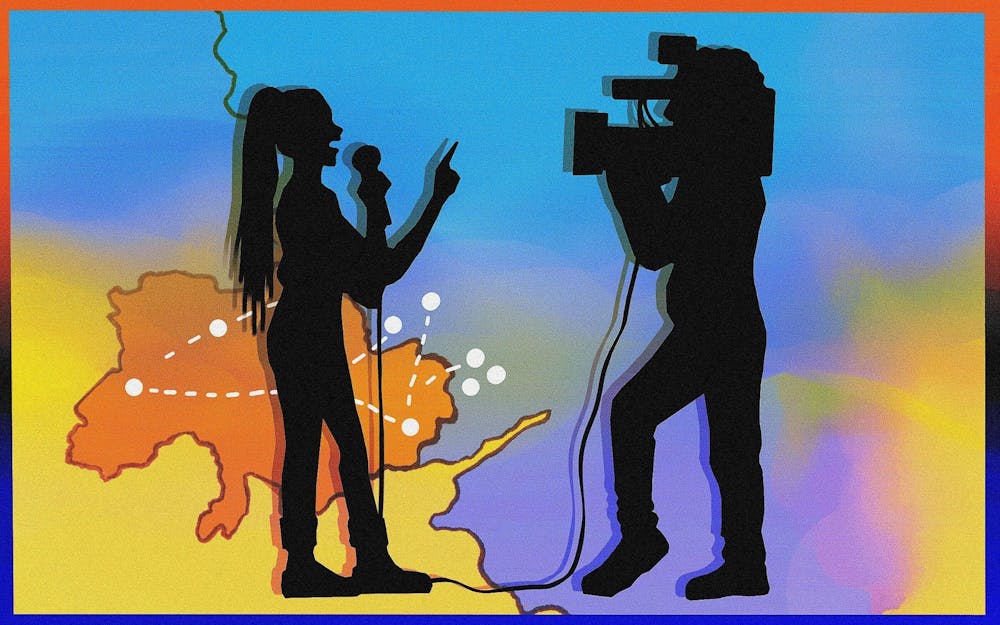The Russia-Ukraine war, has been recently thrust into the spotlight on news outlets around the world since the Russian invasion of Ukraine on Feb. 24 Eastern European Standard Time.
Journalists around the world have been risking their lives to cover this conflict. This necessary and life-changing information they publish allows us to make important political decisions and to raise awareness for civilians suffering.
Before writing this piece, I only knew about the deaths of veteran videographer Pierre Zakrzewski and Ukrainian journalist Oleksandra “Sasha” Kuvshynova, who were both working in Ukraine for Fox News when their vehicle came under fire, killing them on March 14. Benjamin Hall, a third reporter who was also with Fox News, was hospitalized after this attack.
Journalist and filmmaker Brent Renaud was also killed in a Russian attack covering the conflict in Ukraine. In addition, Ukrainian photojournalist and documentary filmmaker Maks Levin went missing on March 13 and has not been found.
The alarming number of fatalities and attacks of journalists keeps increasing.
Journalists are classified as either embedded, meaning they are attached to a military unit, or unilateral, meaning they are independent of a military unit, according to the Committee to Protect Journalists. Embedded journalists can gain access to frontline stories, but this privilege can allow traumatic exposure to violence affecting citizens. Unilateral journalists more commonly experience deaths, though risk of death is high for both types of journalists.
The Third Geneva Convention of 1949 for international armed conflict and the 1977 Additional Protocol I have legalities of protections for journalists detailed. In 2005, Rule 34 was added onto Additional Protocol I to talk about a special identity card for journalists to receive which would only display their identity as a journalist and not give them any more protection than a civilian.
According to the Committee to Protect Journalists, many journalists are offered security training, protective gear and given access to satellite technology in hostile environments. The Peace Journalism Lab at Aristotle University of Thessaloniki in Greece is an institution providing training courses for journalists about field safety in war zones.
Though legal protections and training for journalists have been carefully thought out, many attackers do not face consequences.
In 2021, The United Nations Educational, Scientific and Cultural Organization launched an #EndImpunity campaign to bring awareness to the high amount of crimes against journalists that go unpunished. UNESCO specializes in using education, science and culture to promote international peace and aims to prevent impunity.
UNESCO has also taken the initiative to train nearly 23,000 judicial officials, like judges, prosecutors and lawyers on international standards regarding freedom of expression, the safety of journalists and the grave consequences impunity has on the world.
Unfortunately, it is likely that more journalists may be harmed in Ukraine. Therefore, it is important to celebrate journalistic freedom and recognize the important work journalists risk their lives to do to prevent the spread of misinformation and reveal the horrific truths of war.
Kara Acinapuro (she/her) is a junior studying media advertising. She is vice president of Women in Media and a member of Alpha Phi Omega.






